The 2020 season at Las Buitreras came to an end early in mid-March due to the COVID-19 virus that has swept through nations and is currently holding the whole world hostage. As time is passing, it seems the world is finally starting to learn to live with the virus, and many countries are planning new travel rules to allow international travel to open up safely again.
It is incredible to think that a new season is nearly upon us, and we are all expecting a great season. Signs are looking suitable for international travel to open up again in Argentina, plus the region has had one of the best snowfalls for many years. It is adding up to potentially a great season with adequate sustained water levels for the season.
We have a few rods left on some of our hosted weeks for 2021 so if you are looking forward to getting back out in the wilderness in a safe environment chasing huge Sea trout now is your best chance ever for many years. Click Here to see the full trip details and prices.
To tempt you even further below is a summary of this year’s shortened season and some of the highlights. It’s incredible how quick the season passed, and it’s still hard to believe we only have to wait three months until we are back on the water in southern Patagonia, chasing silver bullets. Until then we’ll be confined to watching photos and daydreaming.
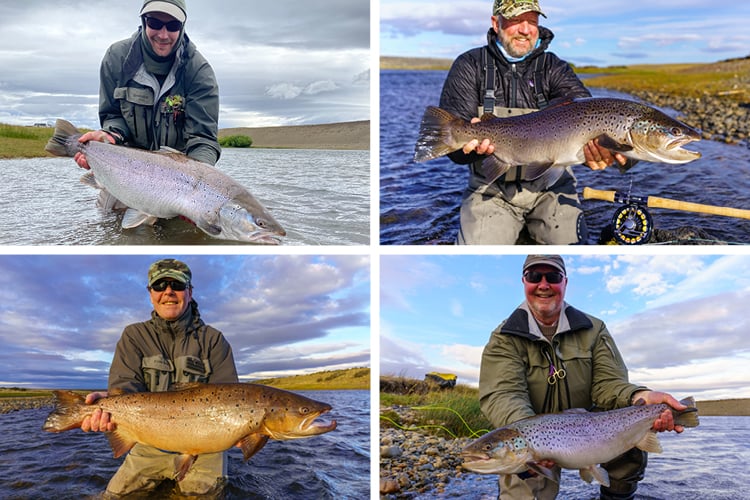

As any angler that has ever fished in southern Patagonia knows, predicting the weather is more or less impossible. You bring as much clothing as you can carry in your bag and take it as it comes. Although January is no different, the chances of experiencing warm summer days, t-shirt fishing, and low water levels are always more likely during this month than say in March.
Last season, however, January had plenty of rain in store for us, and we were lucky to start the season off with excellent water levels that lasted all of January. The number of fish in the river was consistently high, with new runs of fish pushing up regularly. The average size of the fish landed stayed above 10 lbs all through the month. Thanks to the favourable conditions, fish were biting during all hours of the day. Still, that last light and especially the famous “magic hour” seemed to be worth paying a little extra attention. Fish in this river gets aggravated by those Sunray’s and attack them with everything they got, resulting in violent takes and explosions of water. We had many instances of customers coming back to the lodge after landing a trophy fish on a sunray on their last cast of the day!
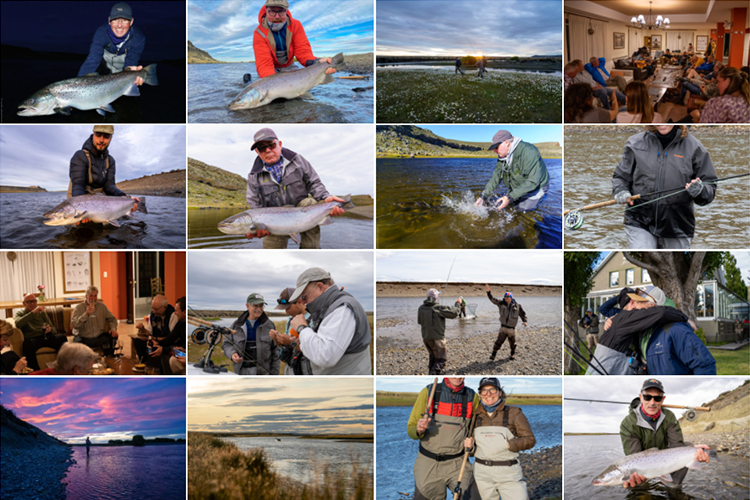

Since we spend a lot of time fishing this river with small, size 8-10 nymphs and similar flies, losing fish is not uncommon. This year, however, we lost quite a few fish due to hooks opening and even breaking. At some stage, we worried it was our supply of flies that had been tied on wrong hooks, but luckily that wasn’t the case.
With this in mind, we can’t stress enough the importance of bringing flies that are tied on strong hooks. Regular trout flies are great for smaller resident browns, but they don’t cut it for the Sea Trout down here. Trust us when we say that you don’t want to be the person that travels across the globe, all the way down to southern Patagonia in search of that trophy fish and finally hooking up, only to lose it due to a weak hook.
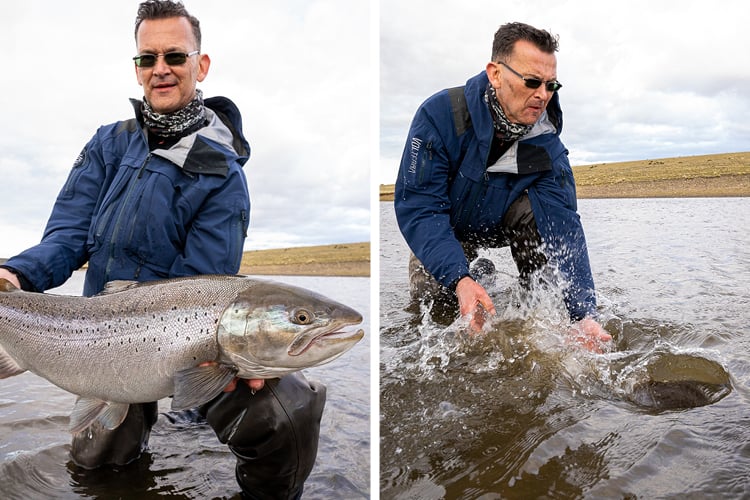

Both weather and river conditions remained consistent as we entered February with rather cold temperatures and acceptable water levels. However, about a week or so into February summer finally decided to arrive with full force. Suddenly we were leaving the fleece jackets in the lodge and smearing our faces with sun lotion before every session. Along with the warmer weather, we also experienced a river that dropped quickly. With low and clear water, it was finally time for the traditional summer tactics, using long leaders, even smaller flies, and an overall stealthy approach. Although these conditions can sometimes be a little tricky as they require anglers to cast and wade more carefully, fishing remained excellent.
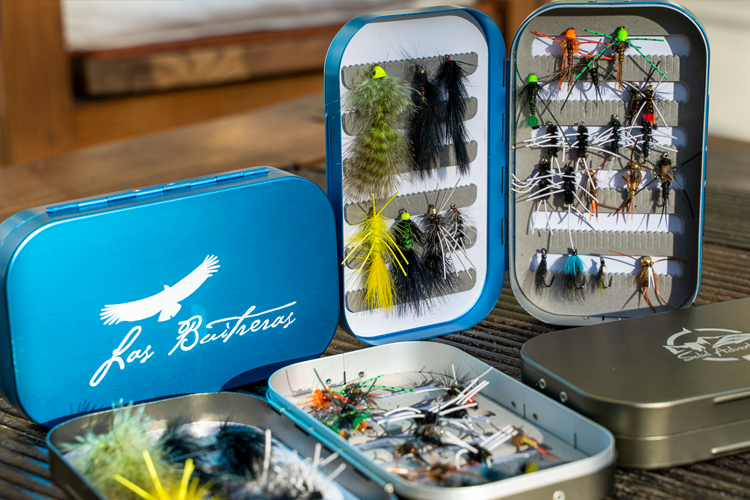

The smaller flies accompanied by long leaders worked perfectly, at least in terms of hooking fish. Landing them was, and always is, another story, however, and the smaller hooks, unfortunately, meant an increased amount of lost fish. As thrilling as a violent take and the initial run can be, as heartbreaking, if not more, it is to see a proper 15 lbs fish go straight up in the air, land in an explosion of water, followed by a slackline.
While we are on the topic of losing fish: one story that stands out from this season was when our friend Peter who hooked an absolute beast of a fish during an afternoon session in Zone 1, fishing a size 10 Copper John in C-pool the water exploded! Seconds later Peters reel was missing a good 60 meters of backing, and the fish was still running. When it hit the pool below, a pool called the Shelf, the fish finally turned and started swimming upstream. The fight lasted somewhere between 15 to 20 minutes and saw the fish into the bank several times, but still always half a meter out of reach of the net. Witnessing this spectacle was Peter’s fishing partner Will and our guide Lawson.
Everyone who’s has been guided by Lawson know’s the difference between his reactions to an OK sized fish and a BIG fish. A fish below 10 lbs may if you’re lucky to bring about a “good job buddy” once the fish has been landed. A 15 lbs plus fish, on the other hand, will have him on his toes during the whole fight, continually repeating the words “ it’s a good fish this is! It’s a good one“! This time however Lawson’s face was pale white.
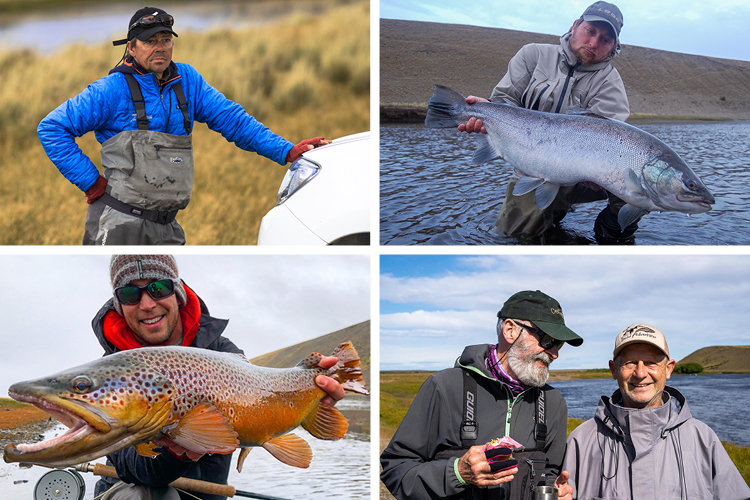

Rumours have it he forgot to breathe for a full minute after seeing the fish the first time, but that’s yet to be confirmed. What we do know however is that at some stage around the 20-minute mark of the fight, after several rounds of Peter running back and forth between C-pool and Shelf. Just as the fish was about to be landed right in front of the net, the fly popped out, and the fish was gone. What happened after that is again unclear, but from what we heard, Peter broke out laughing, super excited about the fight and the experience. Lawson, on the other hand, couldn’t speak for a good 10 minutes. Coming back to the lodge that evening he finally opened up saying he has never been so close to net a 30 lbs fish in this river. A heartbreaking loss indeed but it’s also super encouraging to know that those fish are out there and at any given moment it might be your fly that gets hit by a monster.
By the end of February, we finally had a new push of water, seeing the river rise to around level zero again. From here on we kept getting smaller inspirations of water through to the end of the season holding the water level relatively consistent. Along with the little pushes of water, we were also seeing new fish entering the system regularly.
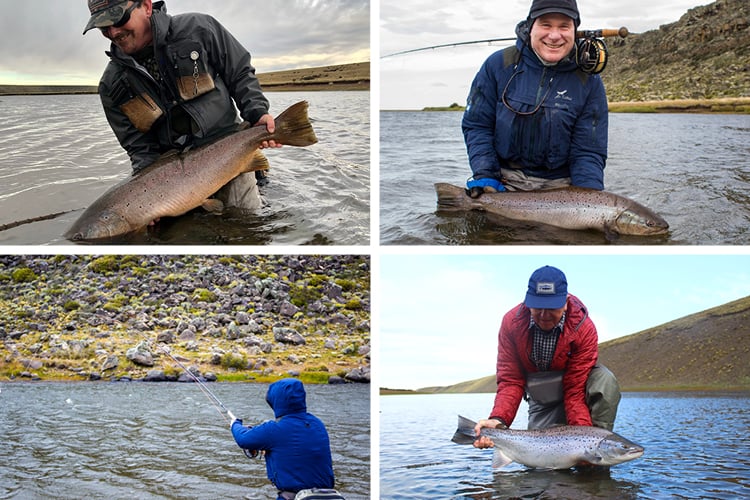

Early March we had several runs of smaller fish in the 4-10 lbs size moving up the system, mixing it up with some of the big guys that had entered the river weeks or even months earlier. These big runs of fresh fish usually occur from March and onwards, during the so-called late season which runs from March to late April. This is usually a perfect time for anyone chasing big numbers of fish. Unfortunately, we were never allowed to capitalize on all the fish in the river this season as we had to close the lodge March 14.
The most successful flies during this season were nymphs in size 8 and 10. One fly, in particular, that stands out year after year is our all-time favourite, Copper John. Anyone that carried a few different sizes and colours of this pattern in their box topped off with a couple of leeches and sunray shadows for the magic hour were good to go
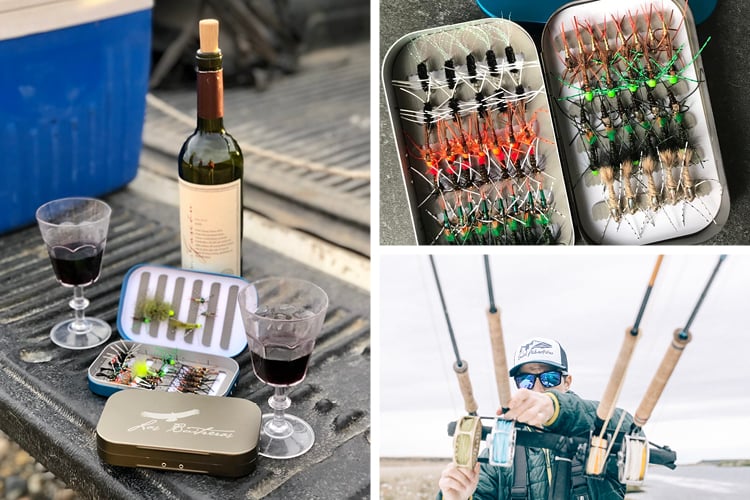

During the few periods of high and coloured water, we were mainly fishing flies such as the Yellow Yummy, Green Lantern or more oversized bead head woolly buggers and nymphs. Apart from one or two days here and there when we fished sink two tips after experiencing a quick rise of the water level, it was all floating and intermediate lines on the menu. Bring a floating belly with interchangeable tips such as the Rio Versitip Short or similar, and you will always be able to fish this river no matter what it throws at you.
Another stand out moment this season was when we spotted and photographed a Puma by the river. It was resting in the high grass just above the Kitchen pool and paid us no attention whatsoever.
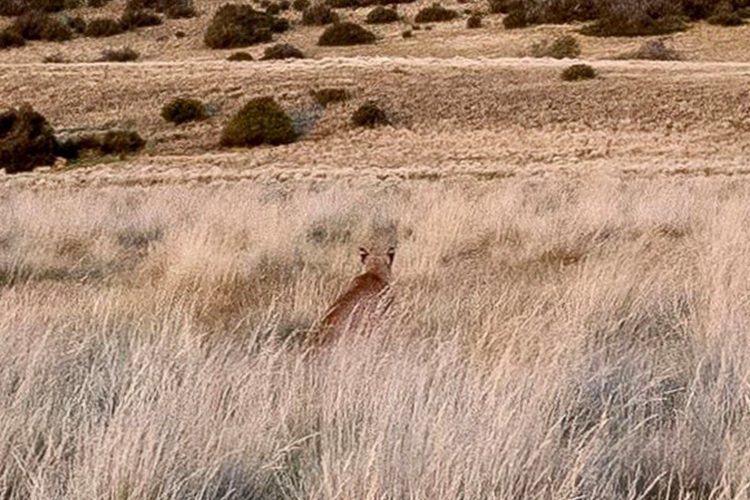

As always, we want to extend our sincere gratitude to all of our customers that came down and visited us this season. This season we were fortunate enough to have plenty of old friends call us as well as making new acquaintances. We are fortunate and beyond privileged to be able to share this place with so many amazing people from all over the world.
A special thank you to our staff and guides who keeps spoiling us both on and off the water, year after year. You are truly unique, and we can’t thank you enough for the quality of service you provide.
Looking ahead at the 2021 season in Patagonia we now have an excellent add-on program called have Glencross (Click Here for more details) which is our new fly fishing operation further upstream for both wild Brown Trout and Sea Trout. This program gives you access to 3 rivers to fish, making it the perfect destination to add-on after a weeks fishing at Las Buitreras.
As mentioned above, we are very much looking forward to our 2021 season, and it would be so good to have you join us for some unforgettable fishing, hospitality all the time while making new friends.
Tight Lines,
Peter





